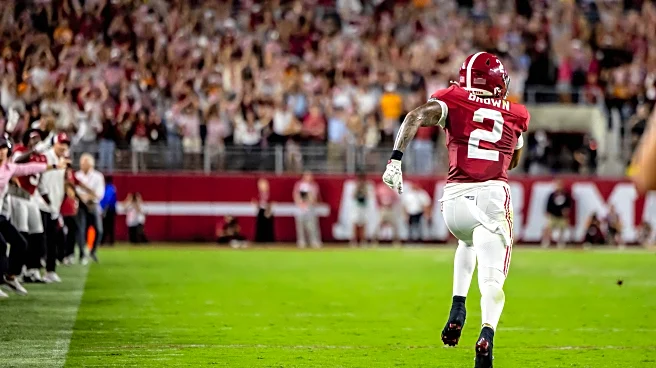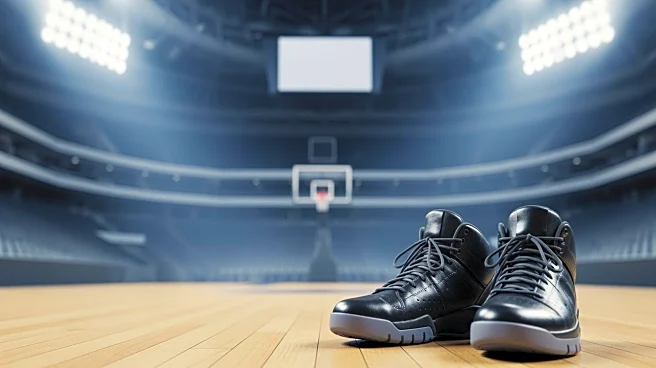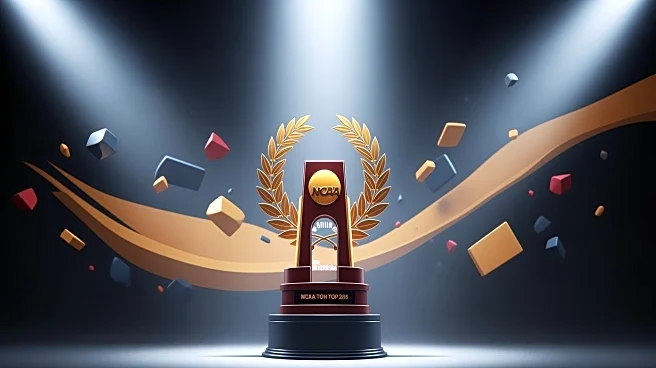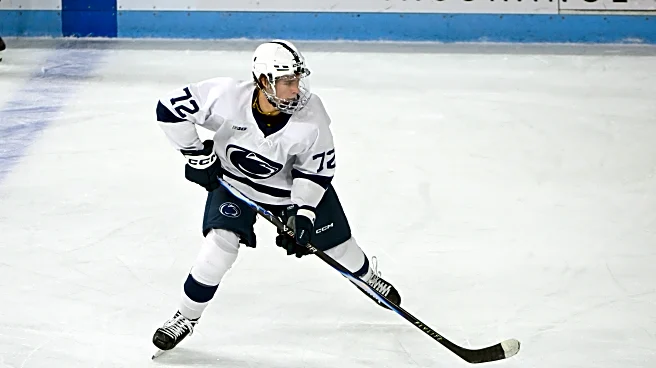What's Happening?
Gavin McKenna has been identified as a top prospect in the NHL Central Scouting's preliminary players to watch list for the 2026 Draft. McKenna, who transitioned from the Canadian Hockey League to the NCAA, is among 175 players making this move, a change
facilitated by a recent NCAA rule adjustment. Last season, McKenna excelled in the Western Hockey League, scoring 129 points and earning player of the year honors. His early performance in the NCAA includes scoring the decisive goal in a win against Arizona State. The list categorizes players with A ratings as potential first-round picks, highlighting McKenna's promising future in professional hockey.
Why It's Important?
The inclusion of Gavin McKenna as a top prospect underscores the impact of the NCAA's rule change allowing Canadian Hockey League players to join NCAA teams. This shift is expected to enhance the depth and competitiveness of NCAA hockey, offering players more pathways to professional careers. McKenna's transition and success highlight the potential benefits for players seeking to develop their skills in a different competitive environment. This development could influence future decisions by young athletes considering their career paths, potentially altering the landscape of hockey talent development in North America.
What's Next?
As the season progresses, McKenna and other top-rated prospects will continue to showcase their abilities, potentially influencing their draft positions. The NCAA's rule change may lead to more players from the Canadian Hockey League joining NCAA teams, further altering the dynamics of college hockey. Scouts and teams will closely monitor these players, assessing their readiness for professional leagues. The long-term effects of this rule change on player development and team strategies will become clearer as more players make the transition.
Beyond the Headlines
The NCAA's rule change represents a significant shift in the hockey development landscape, offering players more flexibility in their career paths. This could lead to increased competition among NCAA teams and potentially higher levels of play. Additionally, the change may prompt discussions about the balance between education and professional sports aspirations, as players navigate their dual roles as students and athletes.














